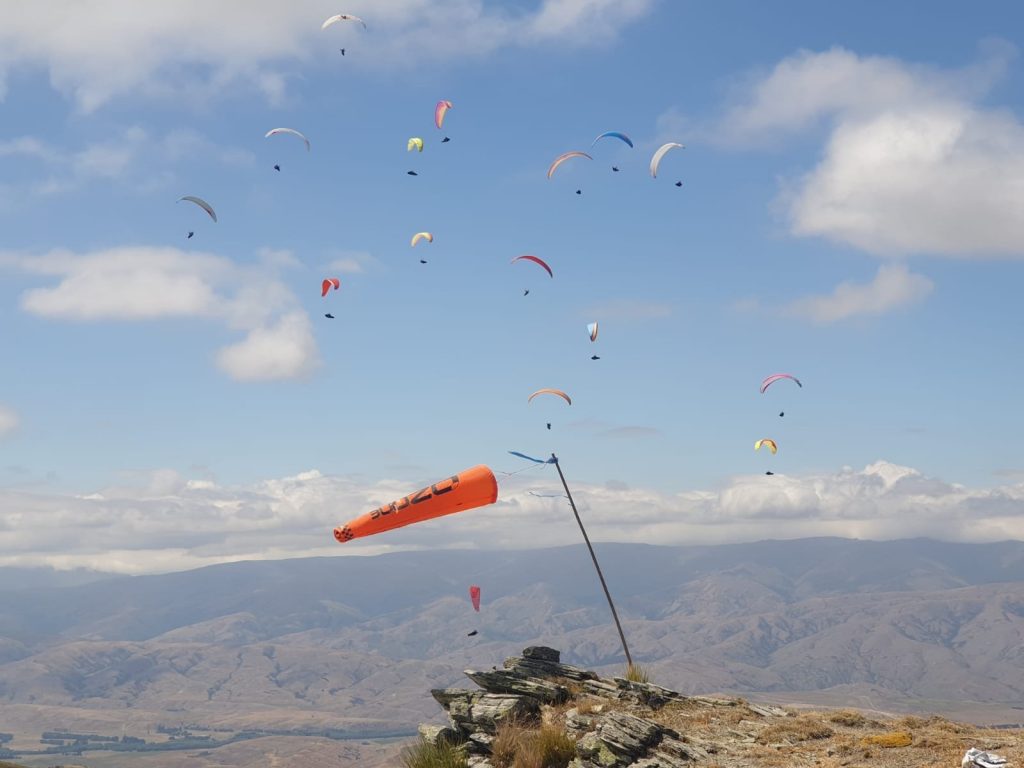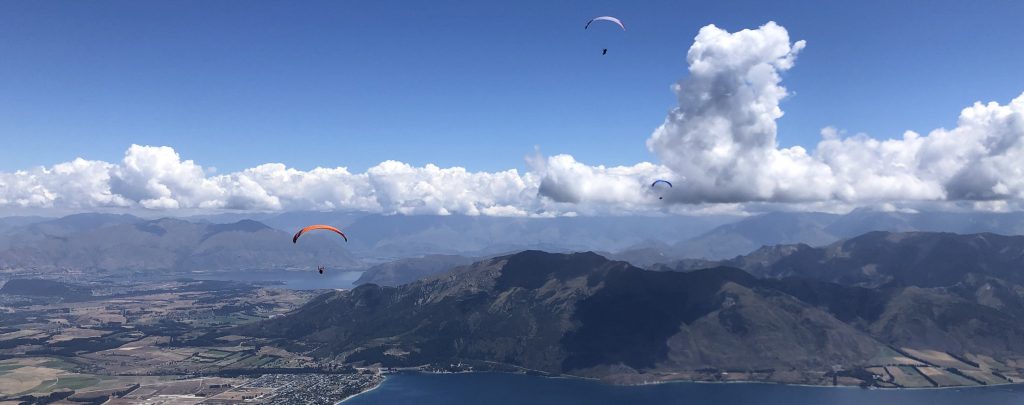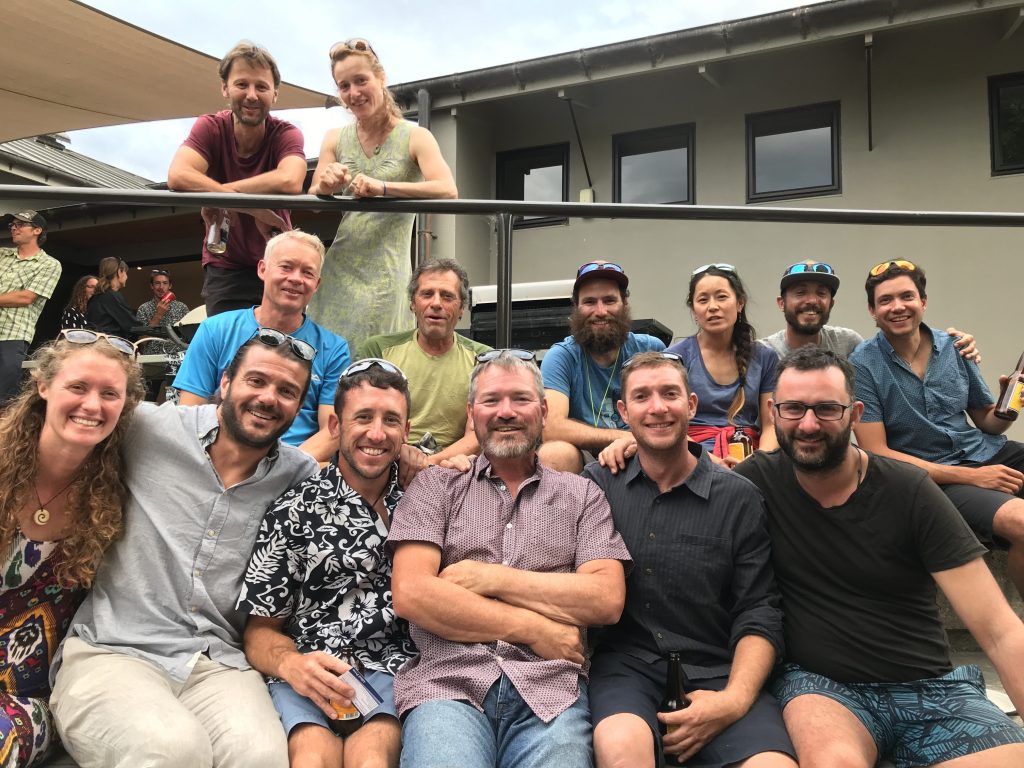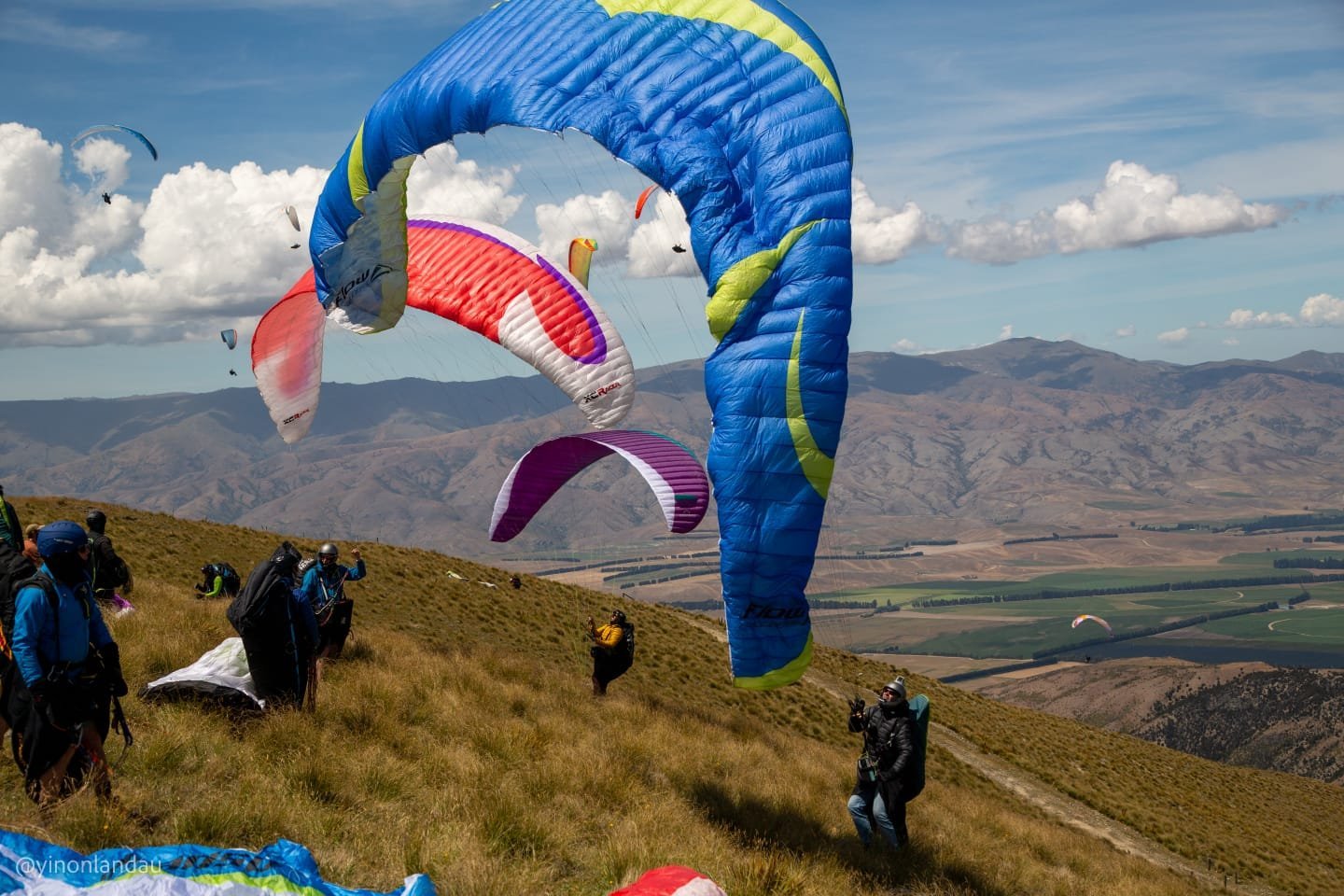Long Gully Station became the Tarras International Paragliding Airport last week, as more than 70 pilots from New Zealand and overseas made it their main launch site for the New Zealand Paragliding National Championships.
Race director Tim Brown and organising committee member Louis Tapper were delighted with the week›long event, the weather and the performance of the pilots, who were able to race five tasks over distances between 63km and 95km.
They were grateful for the support of farmer Dennis Nyhon, other Upper Clutha farmers who provided access for the event, and the local aviation community, because without their tolerance the event would not have been able to take place, they said.
‘‘This was the most exciting and successful competition for 10 to 20 years. We are glad about the weather,’’ Brown said.
‘‘We were able to use this world›class paragliding place to its fullest extent, which we haven’t been able to do for a while,’’ Tapper said.
Many paragliding pilots said they rated Wanaka in the world’s top110 places to compete and fly.

The sport is self-funded in New Zealand, with about 1500 registered pilots with the New Zealand Hang Gliding & Paragliding Association.
Winners are awarded trophies and medals rather than prize money.
‘‘Racers say mountain flying here is unique, they told me ‘boy that was tough flying but it was scenic’,’’ Mr Brown said.
‘‘Everyone asks me about New Zealand and they see the photos. For many, this week made it a reality,’’ Mr Tapper said.
Most talked about by the pilots was the audacious first day flight from Queenstown to Wanaka.
The launch off the back of Coronet Peak had not been done in national competition before.
It was a last-minute change to the programme after the Department of Conservation refused permission to race off from Treble Cone.
Mr Brown said the Coronet Peak launch was intimidating because if pilots landed for some reason, they faced walking for up to seven hours to return to civilisation.

Mr Tapper said he had been thinking about adding Coronet Peak to the championships for about seven years.
Everyone returned, though one pilot landed on Branches Creek Station and had to be picked up.
Jason Turner of Australia said he had flown in Wanaka many times and the new Coronet Peak task was his favourite.
‘‘I would never have gone off it, if it wasn’t for the task. Flying over Raspberry Flat, very much from a scenic point of view, that was the best. And Dingleburn Station — that was insane,’’ Mr Turner said.
Tim Marshall, of Sydney, was a first›timer and said Wanaka was a ‘‘stunning place’’ to fly.
‘‘When the competition was announced I said, I have to come. I had heard about the gorgeous mountains, how remote it was.’’
His friend Daniel Fleming, of Byron Bay, also a first›timer, said he had an ‘‘extraordinary experience’’.
Hawkes Bay pilot Aaron Chesterman said the competition was on the ladder of qualifying events for the world championships in France in May.

He is one of up to four New Zealand pilots who has now amassed enough points to qualify for the world championships, but only three can go.
The other contenders are Mr Tapper, Richard Castro, of Christchurch, who is injured and did not compete this week and Mark Simpson, a New Zealander who lives in the United States and was also in Wanaka for the nationals.
‘‘It has been great. We haven’t had a competition for quite a few years now because of the weather.
‘‘When we have had competitions, we haven’t been able to get enough days in to make them valid. To do five tasks in seven days is very good.
‘‘I did a bunch of competitions in Europe [last year] and most got three days in, and some got up to four. Getting five is a high standard,’’ Mr Chesterman said.





